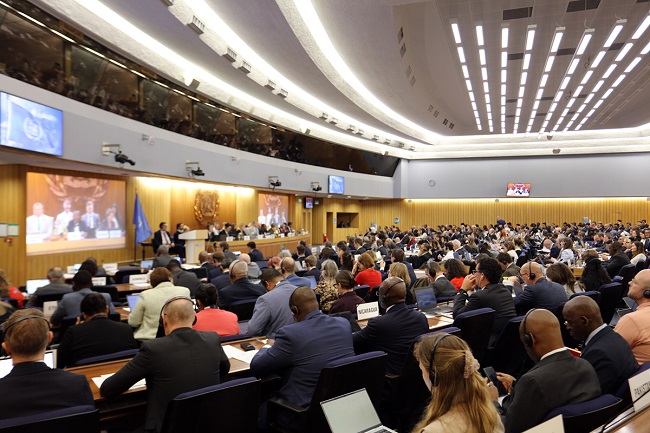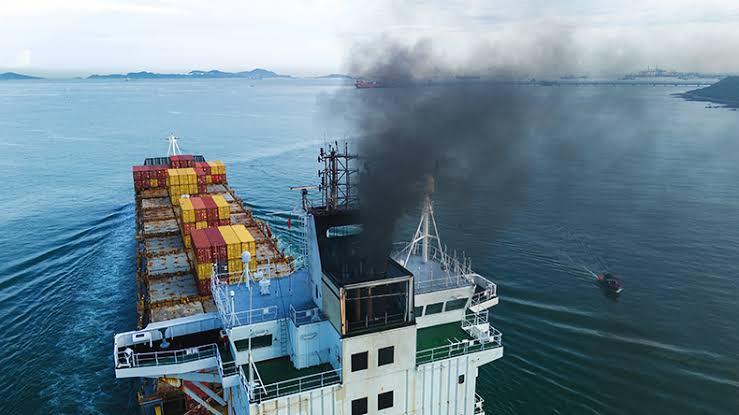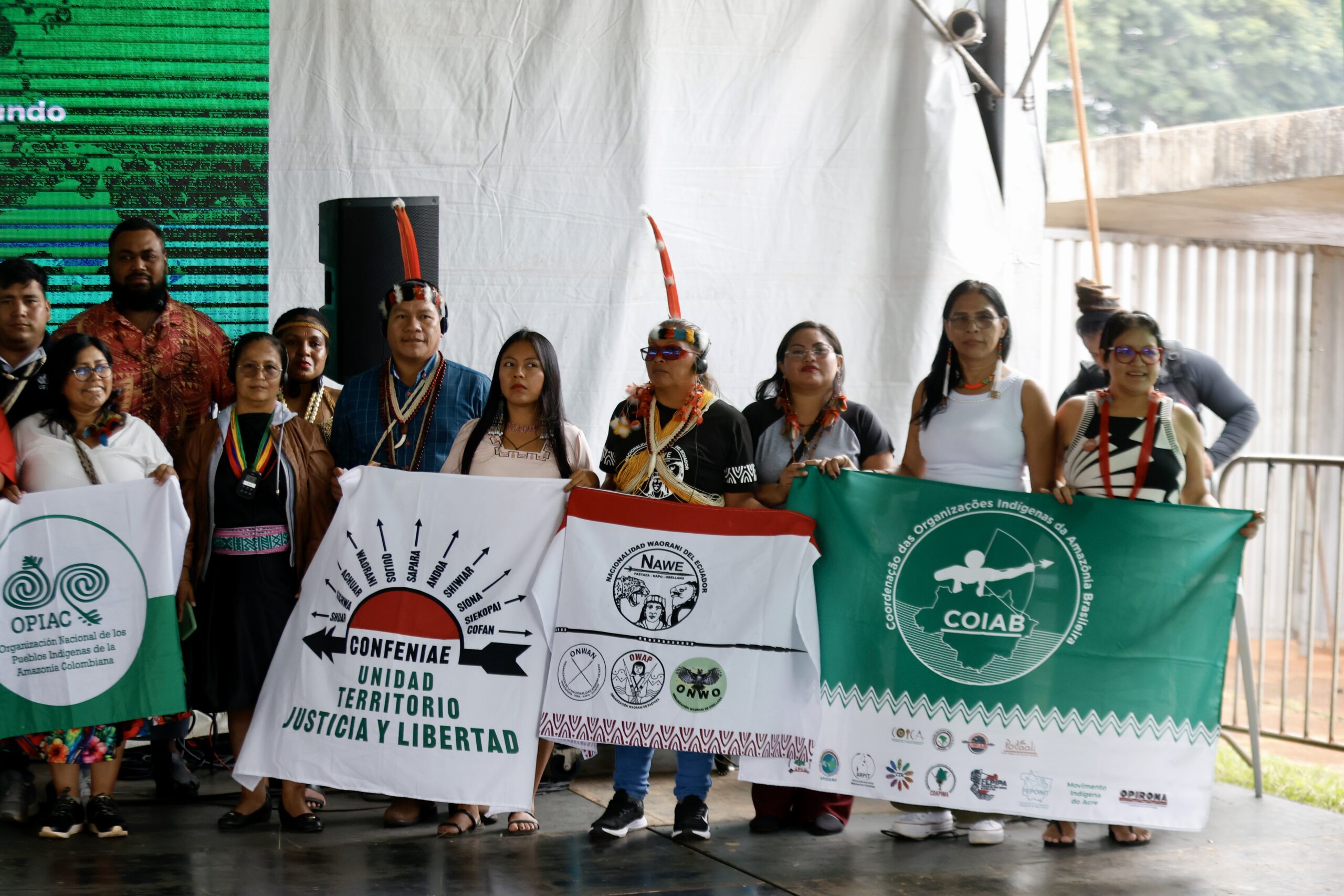The United Nations’ International Maritime Organisation (IMO) on Friday April 11, 2025 adopted the world’s first carbon pricing mechanism for the global shipping industry one of the most polluting sectors globally.
The agreement, reached at the IMO headquarters in London during the closing plenary of a week-long negotiation, marks a critical step towards decarbonising international maritime transport.

The new policy will place a price on shipping emissions starting from 2028, generating an estimated $30–40 billion in revenue by 2030—roughly $10 billion annually.
However, the mechanism has been criticised for falling short of the IMO’s own climate goals and excluding provisions for channeling funds into broader climate finance for vulnerable and developing nations, including those in Africa.
According to the IMO, the carbon pricing scheme will require vessels to either adopt lower-carbon fuel alternatives or pay penalties for excessive emissions.
Ships that continue to use traditional fossil fuels will be charged $380 per tonne of carbon dioxide on the most polluting share of their emissions, and $100 per tonne on remaining emissions above a set threshold.
Though the policy is scheduled for formal adoption in October 2025, several technical aspects remain unresolved.
It is projected to deliver only a 10% reduction in absolute emissions by 2030 significantly below the IMO’s revised 2023 strategy that targets at least a 20% cut, with a stretch goal of 30% by the same year.
In a move that drew backlash from climate-vulnerable countries, the revenue generated from the carbon tax will be ring-fenced exclusively for decarbonising the maritime sector and will not contribute to broader climate financing initiatives.
This decision contradicts calls by a coalition of over 60 countries led by Pacific Island nations for the funds to support developing nations in coping with climate change impacts and transitioning to clean energy.
Nigeria, like many African countries, had hoped for a more inclusive financial mechanism that would support adaptation and resilience measures back home.
The agreement was supported by 63 countries, including Brazil, China, the European Union, South Africa, Kenya, Senegal, and Namibia.
But it faced stiff resistance from petro-states such as Saudi Arabia, the United Arab Emirates, Russia, and Venezuela, who opposed both the substance of the plan and the process that led to its adoption.
Notably, the United States delegation was absent during the final vote, having earlier circulated a text urging delegations to walk out of the negotiations a move many observers say undermined multilateral consensus.
Norway, which chaired the talks, played a crucial role in brokering a compromise that ultimately secured majority support.
Tuvalu, speaking on behalf of Pacific Island nations, expressed “deep disappointment” over the exclusion of vulnerable nations from the core of the negotiations and the lack of transparency.
The Pacific bloc also criticised the framework for failing to incentivise a shift to cleaner fuels, particularly noting that the initial allowance for fossil liquefied natural gas (LNG) would delay the industry’s transition.
While the regulation will progressively penalise LNG use, climate advocates argue that allowing any form of fossil fuel under a climate mechanism sends the wrong signal.
Broader climate finance gaps persist
The development comes months after global leaders, at the COP29 climate talks in Baku, agreed to a $1.3 trillion post-2025 climate finance roadmap to support energy transition in developing countries.
However, how this target will be achieved remains unclear, especially as innovative finance sources like the shipping levy are now being reserved for sector-specific use.
For countries like Nigeria grappling with rising sea levels, coastal erosion, and energy poverty, the IMO’s decision represents both progress and missed opportunity.
As the international community prepares for further climate negotiations later this year, the focus will now shift to refining the details of the carbon pricing mechanism and pushing for more inclusive financial flows.
Observers say the decision at the IMO sets a precedent for applying carbon pricing to other high-emitting industries but warn that without equitable financial redistribution, the world risks deepening the divide between climate-resilient and climate-vulnerable nations.
By Dare Akogun





